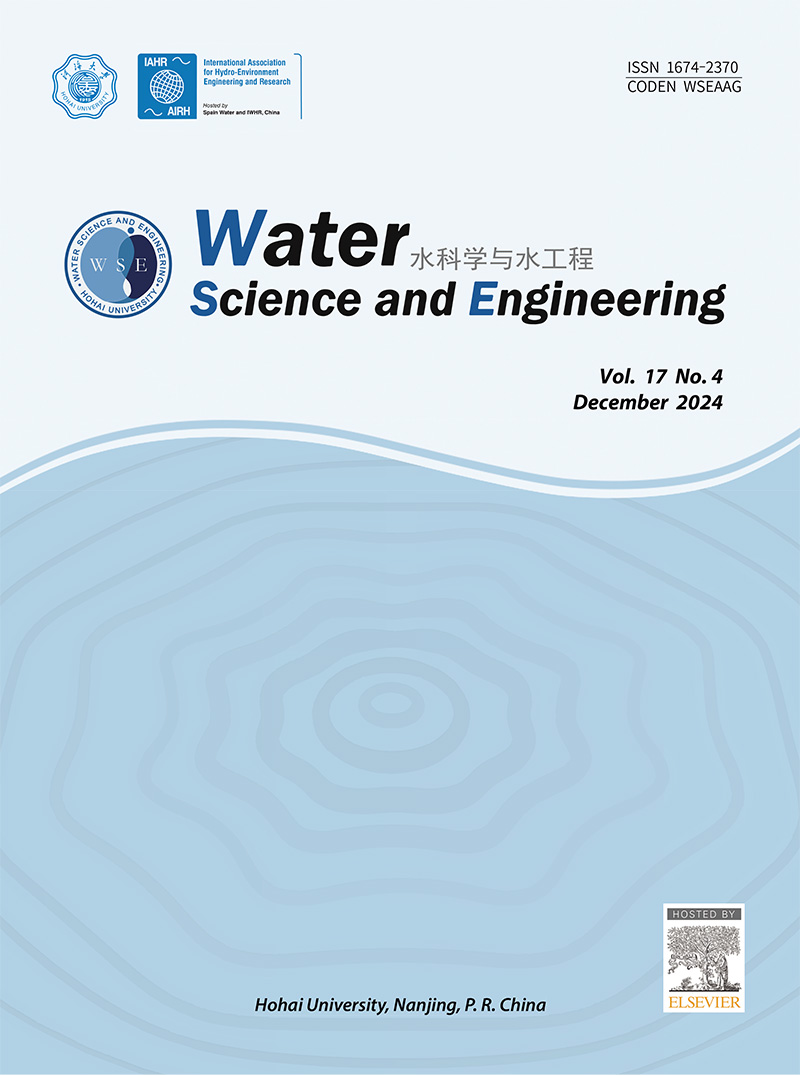Large-scale experimental study on scour around both slender and large monopiles under irregular waves
IF 4.3
Q1 WATER RESOURCES
引用次数: 0
Abstract
Offshore wind power plays a crucial role in energy strategies. The results of traditional small-scale physical models may be unreliable when extrapolated to large field scales. This study addressed this limitation by conducting large-scale (1:13) experiments to investigate the scour hole pattern and equilibrium scour depth around both slender and large monopiles under irregular waves. The experiments adopted Keulegan–Carpenter number (NKC) values from 1.01 to 8.89 and diffraction parameter (D/L, where D is the diameter of the monopile, and L is the wave length) values from 0.016 to 0.056. The results showed that changes in the maximum scour location and scour hole shape around a slender monopile were associated with NKC, with differences observed between irregular and regular waves. Improving the calculation of NKC enhanced the accuracy of existing scour formulae under irregular waves. The maximum scour locations around a large monopile were consistently found on both sides, regardless of NKC and D/L, but the scour hole topography was influenced by both parameters. Notably, the scour range around a large monopile was at least as large as the monopile diameter.
不规则波浪作用下细长和大型单桩冲刷的大型试验研究
海上风电在能源战略中起着至关重要的作用。传统的小尺度物理模型的结果在外推到大尺度时可能不可靠。本研究通过进行大规模(1:13)实验来研究不规则波浪下细长和大型单桩周围的冲刷孔模式和平衡冲刷深度,从而解决了这一局限性。实验采用Keulegan-Carpenter数(NKC)为1.01 ~ 8.89,衍射参数(D/L,其中D为单堆直径,L为波长)为0.016 ~ 0.056。结果表明,细长单桩周围最大冲刷位置和冲刷孔形状的变化与NKC有关,且不规则波与规则波之间存在差异。改进NKC的计算,提高了现有不规则波浪下冲刷公式的精度。与NKC和D/L无关,大型单桩周围的最大冲刷位置在两侧一致,但冲刷孔形貌受这两个参数的影响。值得注意的是,大型单桩周围的冲刷范围至少与单桩直径一样大。
本文章由计算机程序翻译,如有差异,请以英文原文为准。
求助全文
约1分钟内获得全文
求助全文
来源期刊

Water science and engineering
WATER RESOURCES-
CiteScore
6.60
自引率
5.00%
发文量
573
审稿时长
50 weeks
期刊介绍:
Water Science and Engineering journal is an international, peer-reviewed research publication covering new concepts, theories, methods, and techniques related to water issues. The journal aims to publish research that helps advance the theoretical and practical understanding of water resources, aquatic environment, aquatic ecology, and water engineering, with emphases placed on the innovation and applicability of science and technology in large-scale hydropower project construction, large river and lake regulation, inter-basin water transfer, hydroelectric energy development, ecological restoration, the development of new materials, and sustainable utilization of water resources.
 求助内容:
求助内容: 应助结果提醒方式:
应助结果提醒方式:


